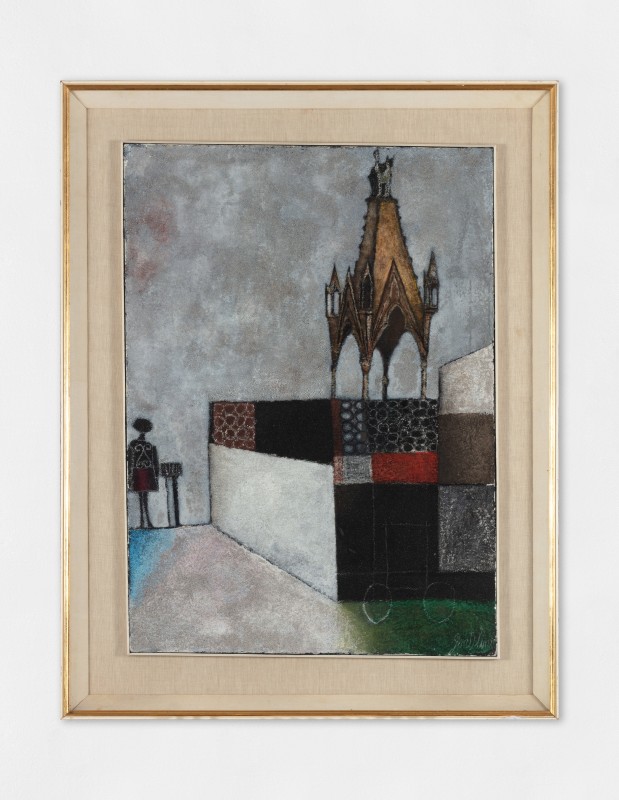-
Biography
Franco Gentilini (Faenza, Italy 1909 - Rome, Italy 1981)
Born in Faenza in 1909, Gentilini took evening courses in drawing and plastics for artisans at the T. Minardi Municipal School.
He is best known for a specific technique that integrates painting and drawing on a sandy background.
In 1929, he made his first trip to Rome, passing through Bologna, where he first met Giorgio Morandi. In 1930, he travelled to Paris to study the Impressionists; at the same time he participated in the Venice Biennale.
Two years later he moved to Rome, where he began to frequent the Caffè Aragno, meeting Renato Barilli, Vincenzo Cardarelli, Emilio Cecchi and Giuseppe Ungaretti as well as the young Leonardo Sinisgalli, Luigi Diemoz, Enrico Falqui and Corrado Cagli with whom he became friends and started various collaborations.
He took part in important exhibitions both in Italy and abroad: in 1933, he held his first solo exhibition at the Rome Gallery, directed by Pier Maria Bardi; in 1937, his first exhibition abroad was at the Carnegie Institute in Pittsburgh; the following year, he frescoed the external wall of the Italian Pavilion at the Venice Biennale (contributing again in 1942). Furthermore, in 1939 and 1943, he exhibited at the Quadrennial in Rome.
In the 1930s, Gentilini’s production consisted mostly of public commissions, paintings and many drawings: squares, monuments and general scenes suggesting a fairy-tale world, clear and limpid visions purged of the horrors of war.
In 1939, he also began teaching at the Florence Art School, frequenting the city’s literary and artistic circle.
In 1953, the meeting with Jean Dubuffet marked an important moment in terms of experimentation: Gentilini began to prepare his canvases with a mixture of river sand and paints to thicken the surface, giving it materiality. His artworks represent geometric stylizations, reversed perspectives and crooked planes.
From 1955, he became the Chair of Painting at the Academy of Fine Arts in Rome and, in 1966, a personal room was dedicated to him at the Venice Biennale.
In 1976, he received the Gold Medal of Public Education.
He died in 1985, following an illness.
Copyright the artist. Photo UniCredit Group (Sebastiano Pellion di Persano)
-
Works



